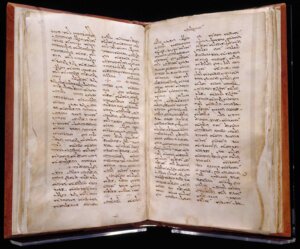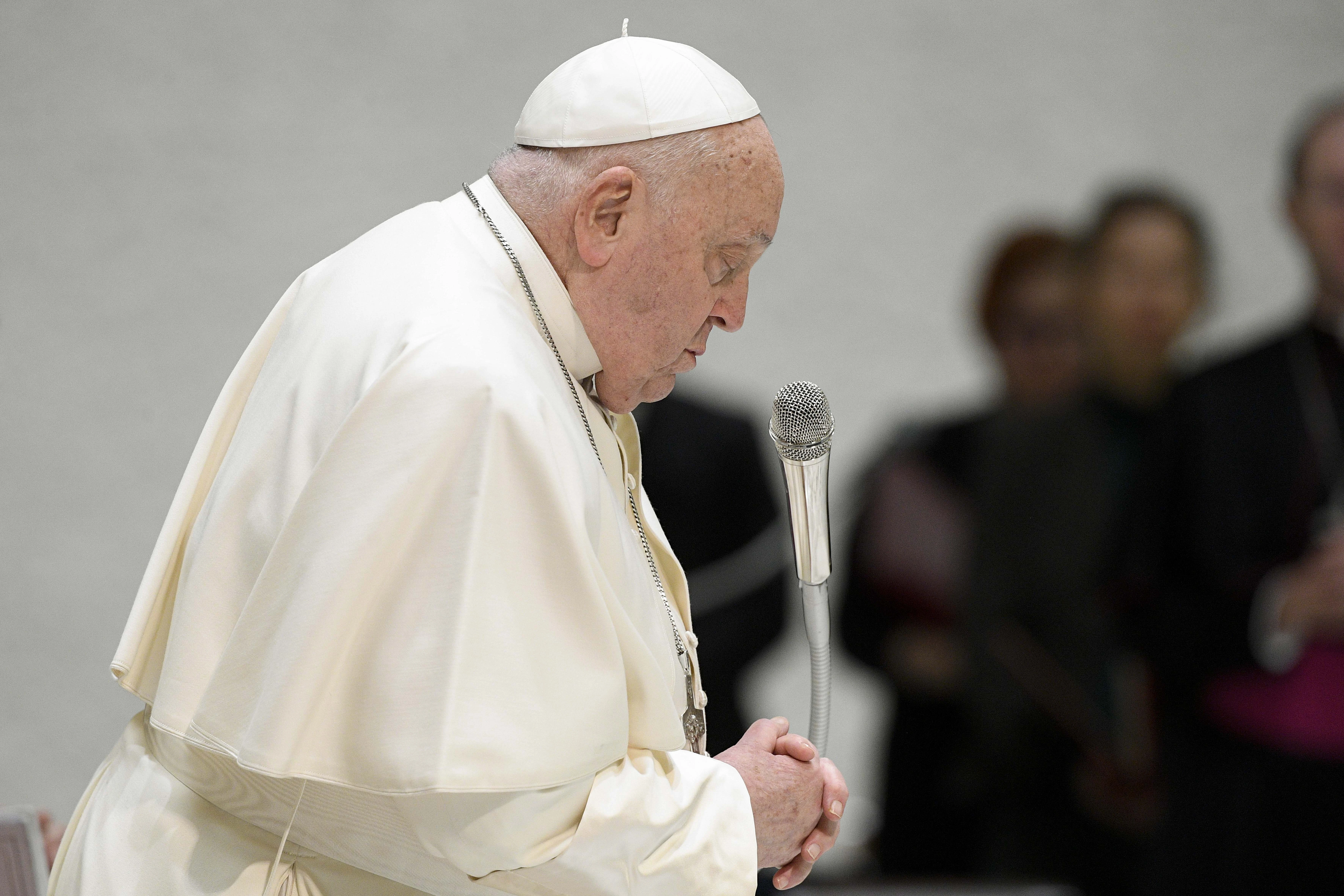The Harp of the Holy Spirit
Against the Gnostic heretics, who sowed errors everywhere by means of song.


Above: Syriac manuscript of St. Ephrem.
1650 years ago, on June 9, 373, died in Edessa (today in Turkey), caring for those infected with the plague. He is known in Christian tradition as the “Harp of the Holy Spirit”: St. Ephrem the Syrian.
He was deacon of the Church of Nisibis in Mesopotamia, where he was born about 66 years earlier, and from which he emigrated to Edessa after the Persian invasion of 363. He was proclaimed Doctor of the Universal Church by Pope Benedict XV († 1922), due to his marvelous and prolific theological production (divided between works in ordinary prose, in poetic prose, homilies in verse and hymns). Reviewing his biography, we see a master of theology and catechesis, a guide for the monks, clergy and people of his time, a scholar of Sacred Scripture, a brilliant orator who also spoke to pagans.

St. Ephrem
Let’s dwell here on the intense pastoral activity he exercised through poetry and song and which makes him stand out in the majestic choir of Christian poets. In the words of the aforementioned Pontiff:
It is indeed fitting to honor the blessed deacon of Edessa for his desire that the preaching of the divine word and the training of his disciples rest on the purity of Sacred Scripture. He also acquired honor as a Christian musician and poet. He was so accomplished in both arts that he was called the ‘lyre of the Holy Spirit.’ From this, Venerable Brothers, you can learn what arts promote the knowledge of sacred things. Ephrem lived among people whose nature was attracted by the sweetness of poetry and music. The heretics of the second century after Christ used these same allurements to skillfully disseminate their errors. Therefore Ephrem, like youthful David killing the giant Goliath with his own sword, opposed art with art and clothed Catholic doctrine in melody and rhythm. These he diligently taught to boys and girls, so that eventually all the people learned them. In this fashion he not only renewed the education of the faithful in Christian doctrine and supported their piety with the spirit of the sacred liturgy, but also happily kept creeping heresy at bay.
The artistry introduced by Blessed Ephrem added dignity to sacred matters as Theodoretus stresses. The metric rhythm, which our saint popularized, was widely propagated both among the Greeks and the Latins. Indeed does it seem probable that the liturgical antiphonary with its songs and processions, introduced at Constantinople in the works of Chrysostom and at Milan by Ambrose (whence it spread throughout all of Italy), was the work of some other author? For the ‘custom of Eastern rhythm’ deeply moved the catechumen Augustine in northern Italy; Gregory the Great improved it and we use it in a more advanced form. Critics acknowledge that that ‘same Eastern rhythm’ had it origins in Ephrem’s Syrian antiphonary.[1]
To encourage memorization among the faithful, the holy Deacon of Edessa composed in Syriac the mīmrē (speeches), poems conceived for recitation, and the madhrāshē (odes), songs, often paraphrases of biblical verses, using verses with the same number of syllables (isosyllabism) and with the initials following one another in alphabetical order (acrostics).
Having discovered the strong predisposition of the inhabitants of Edessa for music, St. Ephrem, according to the evocative story of a biographer, instructed the Daughters of the Covenant, a large group of virgins, and other girls of that capital in Sacred Scripture and liturgical singing. On Sundays and on great feasts, our choir master, accompanied by the harp, taught them his hymns, made up of verses and refrains, which had as their subjects the Nativity, the Passion, the Resurrection and the Ascension, the saints, penance and the dead.
It was a great success: the whole city gathered around the blessed deacon and the Gnostic heretics, who sowed errors everywhere by means of song, gradually disappeared.[2] But it is for the Virgin Mother of God that St. Ephrem plucked the most delicate strings on his harp, to such an extent that “he can be called the first Marian Doctor we find in the ranks of the Holy Fathers.”[3]
To give just a few examples, in a hymn he seems to have intuited the immaculate conception of Mary:
You, O Lord, and your Mother, are the only ones who are in all respects perfect beauty; in you, my Lord, there is no stain, nor in your Mother is there any dishonor.[4]
In another hymn, Mary is the icon of the humiliation of the Word:
The Lord entered her and became a servant; the Word entered her, and became silent within her; thunder entered her and his voice was still; the Shepherd of all entered her; he became a Lamb in her, and came forth bleating. The belly of your Mother changed the order of things, O you who order all! Rich he went in, he came out poor: the high One went into her [Mary], he came out lowly. Brightness went into her and clothed himself, and came forth a despised form. He that gives food to all went in, and knew hunger. He who gives drink to all went in, and knew thirst. Naked and bare came forth from her the Clother of all things [in beauty].[5]
May the example of the Edessine make us deepen our faith and always give glory to God with “psalms and hymns and spiritual songs, singing and playing to the Lord in your hearts” (Eph 5:19).
[1] BENEDICT XV, Principi Apostolorum Petro, October 5, 1920.
[2] Cf. A. HAMMAN, Guida pratica dei Padri della chiesa, Milan, Ancora, 1968, pp. 198-199.
[3] I. Ortiz de Urbina, La Mariologia nei Padri Siriaci, in Orientalia christiana periodica, Rome 1935, p. 103, our translation.
[4] Carmina Nisibena, ed. G. Bickell, Leipzig 1823, pp. 122-123.
[5] Hymn De Nativitate 11, 6-8, in Corpus Scriptorum Christianorum Orientalium, Leuven 1959, 187, pp. 61-62.














